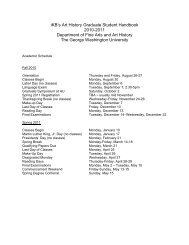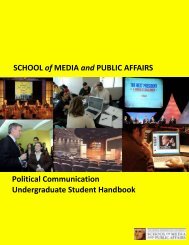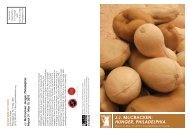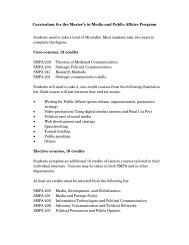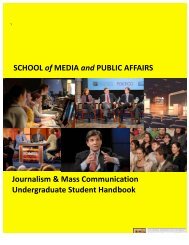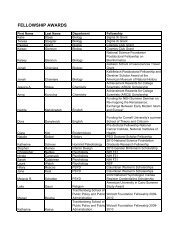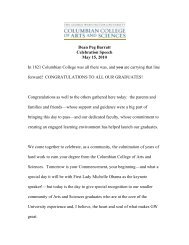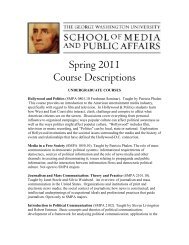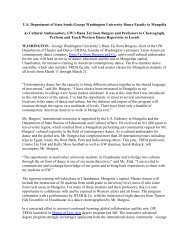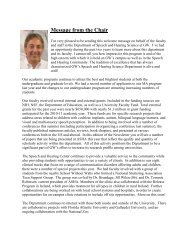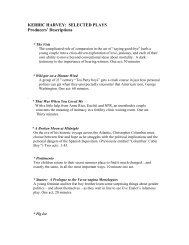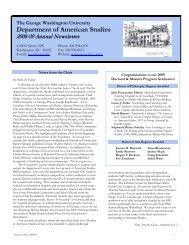Media Coverage and a Federal Grand Jury
Media Coverage and a Federal Grand Jury
Media Coverage and a Federal Grand Jury
Create successful ePaper yourself
Turn your PDF publications into a flip-book with our unique Google optimized e-Paper software.
ors question a witness. Attorneys for witnesses must wait outside<br />
the gr<strong>and</strong> jury room. Even prosecutors <strong>and</strong> transcribers are barred<br />
from being present while the gr<strong>and</strong> jury deliberates or votes. And<br />
although witnesses may discuss their testimony afterwards, federal<br />
rules strictly forbid gr<strong>and</strong> jurors, prosecutors or stenographers from<br />
doing so. 10 Gr<strong>and</strong> jury secrecy is designed to protect the rights of innocent<br />
people who may unfairly come under suspicion by prosecutors<br />
but ultimately are not charged. Secrecy can also help encourage<br />
witnesses to testify without fear of publicity <strong>and</strong> can prevent criminal<br />
targets from fleeing or destroying evidence, or intimidating or<br />
silencing witnesses. 11<br />
The gr<strong>and</strong> jury system has deep roots in both American <strong>and</strong><br />
British law. 12 Gr<strong>and</strong> juries were originally dubbed the “People’s<br />
Panel” because they are composed of ordinary citizens <strong>and</strong> were<br />
intended to be a check on overzealous prosecutors. According to the<br />
Supreme Court, the gr<strong>and</strong> jury has historically “been regarded as a<br />
primary security for the innocent against hasty, malicious, <strong>and</strong> oppressive<br />
prosecution; it serves the invaluable function in our society<br />
of st<strong>and</strong>ing between accuser <strong>and</strong> accused.” 13 However, gr<strong>and</strong> juries<br />
have frequently been misused for political purposes. During the<br />
1930s, New York prosecutor Thomas E. Dewey greatly exp<strong>and</strong>ed<br />
the use of gr<strong>and</strong> juries to force testimony <strong>and</strong> thereby make it easier<br />
to imprison corrupt politicians. In the 1950s, government officials<br />
used gr<strong>and</strong> juries to interrogate suspected Communists <strong>and</strong> then jail<br />
them for contempt of court when they refused to answer questions.<br />
By thus abusing the gr<strong>and</strong> jury system, prosecutors were able to find<br />
a way to imprison dissidents even though authorities lacked sufficient<br />
evidence to convict them of any underlying crimes. By the<br />
1960s, gr<strong>and</strong> juries followed the recommendations of prosecutors in<br />
more than 97 per cent of all cases. The trend toward turning gr<strong>and</strong><br />
juries into proverbial “rubber stamps” of prosecutors—panels that<br />
would, to borrow another cliché, readily indict a ham s<strong>and</strong>wich 14 —<br />
only accelerated over time. F. Lee Bailey voiced the view of many<br />
defense lawyers of that era when he called the contemporary gr<strong>and</strong><br />
jury “a flock of sheep led by the prosecutor across the meadows to<br />
the finding he wants.” 15<br />
In 1969, after being elected president on a law-<strong>and</strong>-order platform,<br />
Richard Nixon exp<strong>and</strong>ed the powers of federal gr<strong>and</strong> juries<br />
<strong>and</strong> used them to crack down on street crime <strong>and</strong> leftist political<br />
dissent. Under the direction of Attorney General John Mitchell, a<br />
Nixon friend who managed the President’s political campaigns, the<br />
Justice Department began using gr<strong>and</strong> juries to gather domestic po-<br />
10 • American Journalism —



